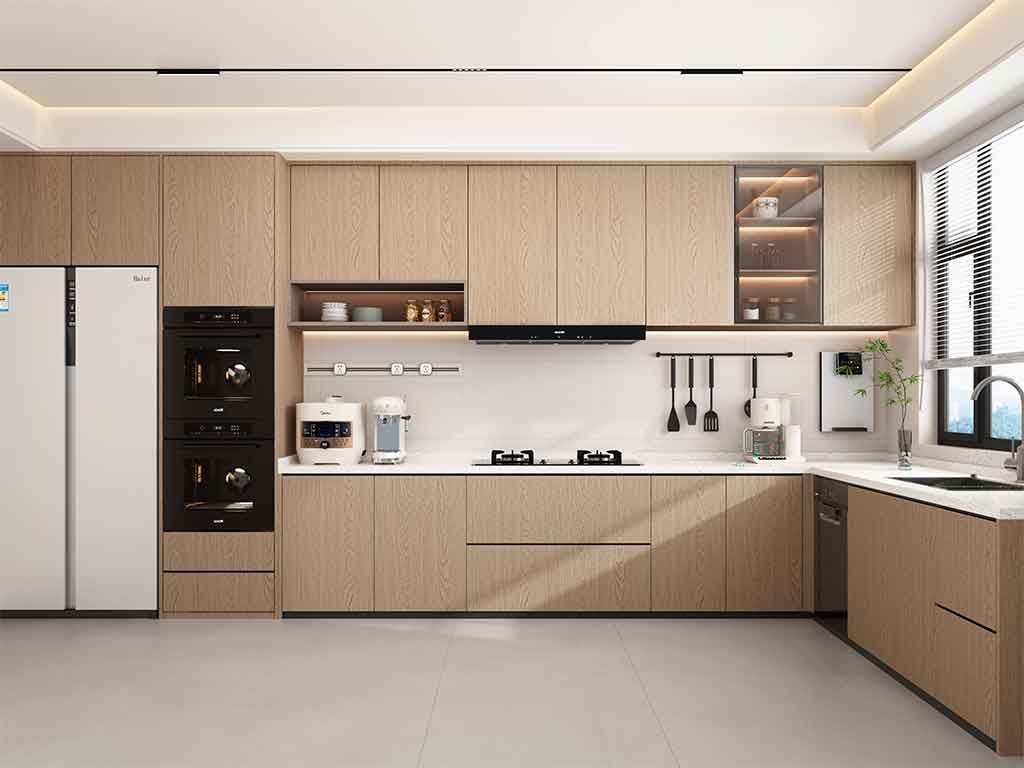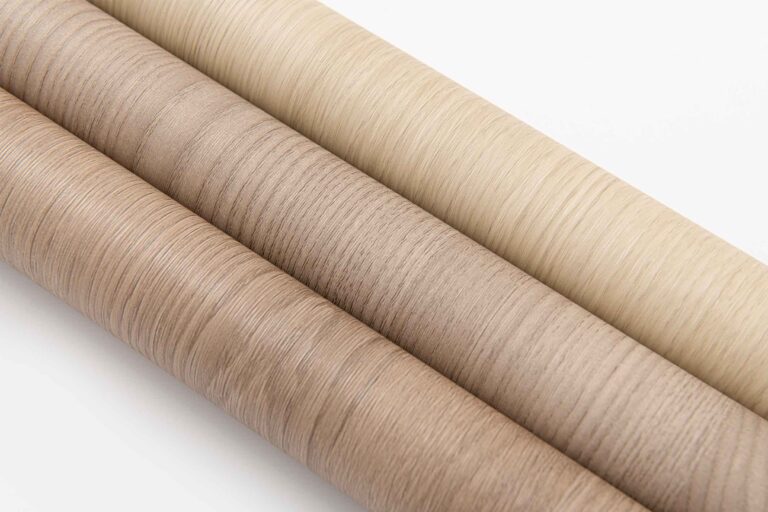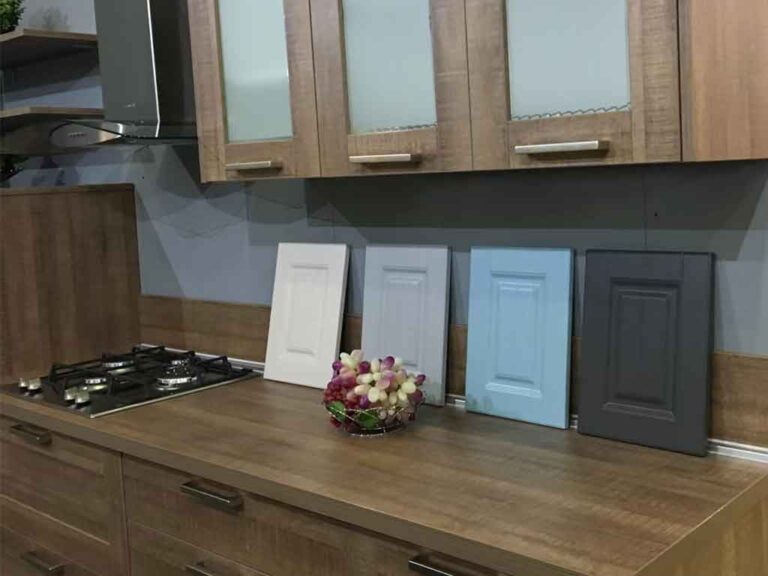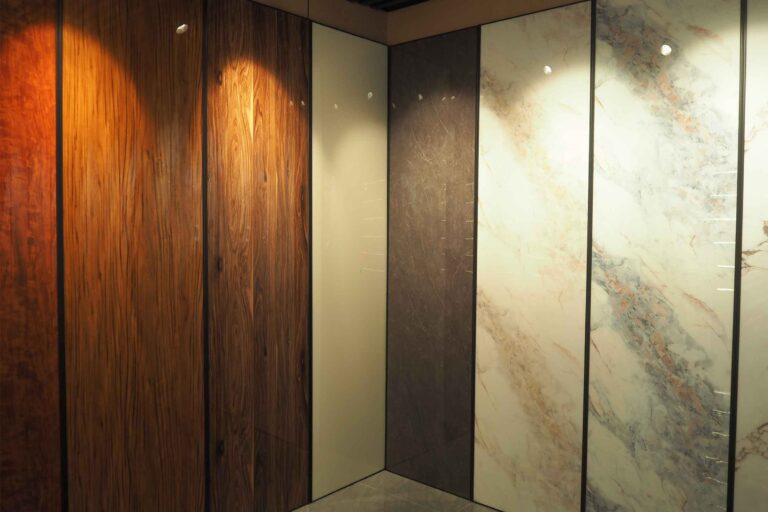Vacuum Pressing with PVC Decorative Film: A Game-Changer for Furniture Manufacturing
Introduction
In the competitive world of furniture manufacturing, achieving a high-end finish while maintaining durability and cost-efficiency is crucial. Vacuum pressing with PVC decorative film has emerged as a revolutionary technique, enabling manufacturers to produce flawless, durable, and visually stunning surfaces for WPC doors, kitchen cabinets, bathroom vanities, wardrobes, and wall panels.
But how exactly does vacuum pressing work, and why is it superior to traditional lamination methods? This comprehensive guide explores the process, benefits, applications, and industry comparisons to help manufacturers optimize their production.
What Is Vacuum Pressing?
Vacuum pressing is an advanced thermoforming process that bonds PVC decorative film to a substrate (such as MDF, particleboard, or WPC) using heat, pressure, and vacuum suction. Unlike traditional lamination, which relies on adhesives and manual pressing, vacuum pressing ensures perfect adhesion without bubbles, wrinkles, or peeling.
How Does the Vacuum Pressing Process Work?
- Substrate Preparation
- The base material (WPC, MDF, etc.) is sanded and cleaned to ensure a smooth surface.
- A primer may be applied to enhance adhesion.
- PVC Film Application
- The PVC decorative film (pre-coated with heat-activated adhesive) is placed over the substrate.
- The film can mimic wood grain, marble, metallic finishes, or solid colors, offering endless design possibilities.
- Vacuum Sealing & Heating
- A flexible silicone membrane covers the material, and a vacuum pump removes all air, creating uniform pressure.
- Heat (typically 120°C–180°C) softens the film, allowing it to conform perfectly to the substrate—even on 3D contours, edges, and grooves.
- Cooling & Finishing
- After heating, the material cools, locking the film into place.
- The result is a seamless, scratch-resistant, and waterproof surface ready for final assembly.
Why Choose Vacuum Pressing for WPC Furniture?
1. Superior Aesthetic Quality
- No Bubbles or Wrinkles – Unlike traditional lamination, vacuum pressing eliminates air pockets, ensuring a perfectly smooth finish.
- High-End Look – PVC films can replicate wood, stone, leather, or metallic textures at a fraction of the cost.
2. Exceptional Durability
- Waterproof & Moisture-Resistant – Ideal for kitchen cabinets, bathroom vanities, and WPC doors in humid environments.
- Scratch & UV-Resistant – Withstands daily wear and tear better than standard laminates.
3. Cost & Production Efficiency
- Faster Processing – Single-step application reduces labor time.
- Lower Material Waste – Precise vacuum adhesion minimizes film and adhesive waste.
- Longer Lifespan – Reduces replacement costs due to peeling or damage.
4. Design Flexibility
- 3D & Curved Surfaces – Perfect for shaped cabinet doors, decorative panels, and furniture edges.
- Customizable Finishes – Matte, gloss, textured, or embossed options available.
Vacuum Pressing vs. Traditional Lamination: Key Differences
| Feature | Vacuum Pressing | Traditional Lamination |
|---|---|---|
| Adhesion Quality | Seamless, no bubbles | Risk of air pockets & peeling |
| Durability | Waterproof, scratch-resistant | Less resistant to moisture & wear |
| Production Speed | Single-step, faster | Multiple steps, slower |
| 3D Shaping | Perfect for curves & edges | Limited to flat surfaces |
| Cost Efficiency | Lower waste, long-term savings | Higher material loss |
Best Applications for Vacuum-Pressed PVC Film
- WPC Doors & Wall Panels
- Ideal for moisture-prone areas (bathrooms, kitchens).
- Lightweight yet durable compared to solid wood.
- Kitchen & Bathroom Cabinets
- Resists steam, spills, and scratches.
- Available in high-gloss, matte, or woodgrain finishes.
- Wardrobes & Furniture
- Customizable textures (e.g., leather, brushed metal).
- Cost-effective alternative to veneers.
- Commercial & Retail Fixtures
- Used in hotel interiors, shop displays, and office furniture due to high durability.
Conclusion: Is Vacuum Pressing Right for Your Business?
For manufacturers of WPC doors, cabinets, and furniture, vacuum pressing offers unmatched quality, efficiency, and design flexibility. By eliminating common issues like bubbling, peeling, and moisture damage, this method ensures long-lasting, high-end finishes that meet modern consumer demands.
Next Steps for Manufacturers
- Invest in a vacuum press machine for small or large-scale production.
- Source high-quality PVC films from trusted suppliers. Click here to contact us!
- Test different textures & colors to match market trends.
Would you like recommendations on machinery brands? Let’s discuss how to optimize your production line for higher efficiency and profitability! For more information, you could click here for videos.



